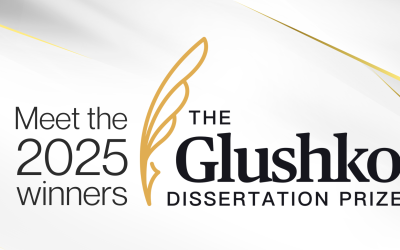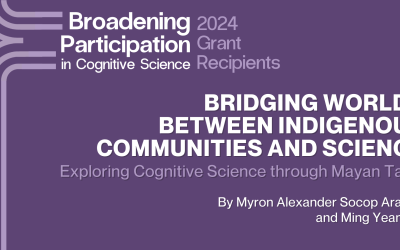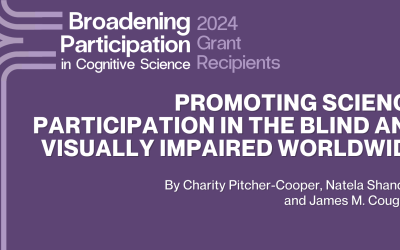By Gwen Price
The word “categorization” might lead you to think of an aspect of cognition that is studied by a small subset of perception or language researchers. However, it is much more than that, and it is fundamental to understanding cognition as a whole. Categorization is the only way that we have any hope of understanding the flurry of information battering our senses. It is how we think about any singular idea, speak any range of words, and even how we perceive our world.
Categorization is segmenting the world into understandable parts. It is taking a range of the color spectrum and calling it blue. It is labeling long scaly creatures as dangerous. It is necessary for thought, communication, and survival. While the world may be chaotic, there are regularities through which we create meaning. We understand that some objects, people, places, practices, or ideas are similar and others are distinct. We can think and communicate about both concrete and abstract things. We do this every day, from understanding the motion of “up” to reasoning about political theory. Every word we speak and thought we have is created in part through the process of categorization.
Categories are formed when we take note of patterns, that is, when we figure out what things go together. Understanding a word is knowing the category of things that belong together, the sounds that make up the label, and the connection between the category and the label. To form a category, we find similarities between things and determine the allowed boundaries of variation. This is called comparison, and it helps us learn new things (Gentner & Namy, 1999; Kotovsky & Gentner, 1996; Twomey, Ranson, & Horst, 2014). Comparing two things, like a bird above the clouds and a pen above the table help us to understand what it means to be “above.” The similarity between these two instances of “above” is that one thing is situated over the other. This spatial arrangement is a necessary component to be “above,” but the object and context can vary and it will still be “above.” Comparison is a powerful mechanism that helps us to sift through the variation, discriminate between different instances, and notice and remember the specific commonalities (Doumas & Hummel, 2013; Gentner, 2005).
Finding patterns happens very early on and allows us to begin to learn language. Tracking the patterns of a language requires noticing the statistical probability of sounds. For example, children notice cooccurrences of the word “daddy” and their father’s face. This is a fundamental aspect of learning that leads infants to be able to eventually learn what “daddy” is. This recurrent pairing of “daddy” and their father leads children to understand a couple things: one, that the group of sounds is probably a word to be learned, and two, that it likely refers to the person that is around when they are spoken (Bulf, Johnson, & Valenza, 2011; Saffran, Aslin, & Newport, 1996).
Statistical learning appears early, with infants as young as 8 months being able to pick out individual words from a stream of speech (Saffran et al., 1996; Saffran & Kirkham, 2018). That is, the transitional probabilities, or the probability of one sound following another, help infants parse apart possible words. Parsing words in this way is necessary to learn words because in speech we don’t have obvious pauses between words that we do in writing. For example, an infant might hear the sentence “Do you want milk?” and in that speech, the words “want” and “milk” are not explicitly separated. Over time infants hear the word “want” followed by many other words like “cookie”, “ball”, and “mommy”, leading to an understanding that the probability that the sound “wa” comes before “nt” is more likely than the probability of “nt” before “mi”. Therefore, by tracking these probabilities, the infant can safely assume “want” is a word, and “ntmi” is not. This process of statistical learning results from attention toward these probabilities in the stream of information from the environment (Erickson, Thiessen, & Graf, 2014; Saffran et al., 1996). This learning process happens at an early stage in development, and it is one of the first ways children begin to learn language.
Constructing mental representations of categories, and in effect learning language, can influence how we think about the world. Having language gives us the ability to think and reason about ideas like macroeconomics and professional baseball. Additionally, some researchers posit that which language a person speaks can change how we think. This is, at least in part, because languages differ in how they categorize things like spatial positions, colors, shapes, gender, and even emotions. For example, some languages have different reference points for spatial positions, more precision in color words, and different naming conventions for objects. These categorization differences across languages can all impact how we perceive and think about the world (Whorf, 1956; Sapir, 1921; Lucy & Gaskins, 2001; Levinson, 1996; Hoemann, Xu, & Barrett, 2019); however, not all researchers agree with this position (see Bloom & Kiel, 2001 for a review).
Color words, for example, do not necessarily refer to natural divisions in the color spectrum, but instead to linguistically chopped-up hues. What is ‘blue’ in English is two different categories in Russian: голубой and синий, meaning light and dark blue, respectively. These are two distinct colors in the same way as blue and purple are distinct in English. Those who don’t speak Russian can of course still see the difference between light and dark blue. However, because the Russian language makes a clearer distinction between the two hues, they also have a clearer distinction between those hues in their mind than English speakers (Winawer et al., 2007). As a result, Russian speakers are faster to detect differences in these two hues than English speakers. The color category boundaries that languages provide change how quickly we can notice differences between those hues, facilitating our ability to recognize distinctions when the hues have different names and slowing our ability to recognize those same distinctions when the hues share a name (Regier & Kay, 2009). Categories therefore can change how we attend to features in our environment.
Categorization is important for many aspects of cognition and influences research from perception, to social cognition, to understanding truth (Goldstone, Day, & Son, 2010; Harnad, 2017). For example, it is important to be able to categorize emotional expressions to know what others are feeling and to respond appropriately to the social situation (Reschke, Walle, & Dukes, 2017). Making decisions about things like “what car should I buy?” and “what is the truth?” requires the ability to create categories for “good cars” and “fake news.” How we — and for that matter, the machines we create in our image — perceive comes down to categorizing images, edges, and movement. Categorization is cognition; it doesn’t just impact the other areas of cognition; it is an integral part of every other domain of cognitive science.
References
Bulf, H., Johnson, S. P., & Valenza, E. (2011). Visual statistical learning in the newborn infant. Cognition, 121(1), 127–132. https://doi.org/10.1016/j.cognition.2011.06.010
Doumas, L. A. A., & Hummel, J. E. (2013). Comparison and Mapping Facilitate Relation Discovery and Predication. PLoS ONE, 8(6). https://doi.org/10.1371/journal.pone.0063889
Erickson, L. C., Thiessen, E. D., & Graf, K. (2014). Statistically coherent labels facilitate categorization in 8-month-olds. Journal of Memory and Language, 72, 49–58.
Gentner, D. (2005). The Development of Relational Category Knowledge. In Building Object Categories in Developmental Time (pp. 245–275).
Gentner, D., & Namy, L. L. (1999). Comparison in the Development of Categories. Cognitive Development, 14(4), 487–513. https://doi.org/10.1016/S0885-2014(99)00016-7
Goldstone, R. L., Day, S., & Son, J. Y. (2010). Comparison. In Towards a Theory of Thinking (pp. 103–121). https://doi.org/10.1007/978-3-642-03129-8
Harnad, S. (2017). To cognize is to categorize: Cognition is categorization. Handbook of Categorization in Cognitive Science. https://doi.org/10.1016/B978-0-08-101107-2.00002-6
Kotovsky, L., & Gentner, D. (1996). Comparison and Categorization in the Development of Relational Similarity. Child Development, 67(6), 2797–2822. https://doi.org/10.2307/1131753
Reschke, P. J., Walle, E. A., & Dukes, D. (2017). Interpersonal Development in Infancy: The Interconnectedness of Emotion Understanding and Social Cognition. Child Development Perspectives, 11(3), 178–183. https://doi.org/10.1111/cdep.12230
Saffran, J. R., Aslin, R. N., & Newport, E. L. (1996). Statistical Learning by 8-Month-Old Infants. Science, 274(5294), 1926–1928.
Saffran, J. R., & Kirkham, N. Z. (2018). Infant Statistical Learning. Ssrn, 69, 181–203. https://doi.org/10.1146/annurev-psych-122216-011805
Twomey, K. E., Ranson, S. L., & Horst, J. S. (2014). That ’ s More Like It : Multiple Exemplars Facilitate Word Learning. Infant and Child Development, 122(October 2013), 105–122. https://doi.org/10.1002/icd
Winawer, J., Witthoft, N., Frank, M. C., Wu, L., Wade, A. R., & Boroditsky, L. (2007). Russian blues reveal effects of language on color discrimination. Proceedings of the National Academy of Sciences of the United States of America, 104(19), 7780–7785. https://doi.org/10.1073/pnas.0701644104



